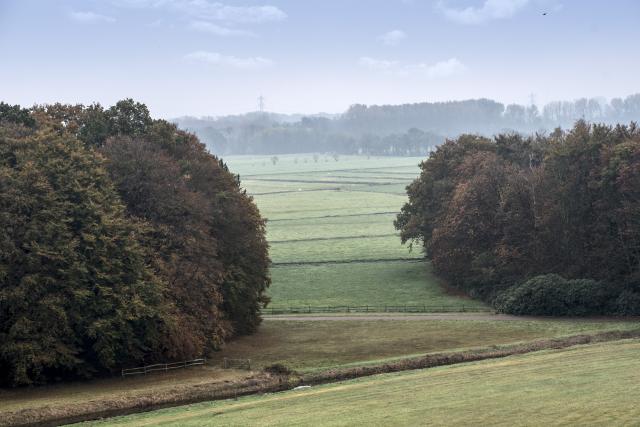The landscape park
A balloon ride, an escaperoom or to the cinema: we are constantly looking for variety, thrills and entertainment. This was no different in the nineteenth century. Prince Frederick of the Netherlands had a beautiful landscape park laid out on his estates where there was always something to experience: a picturesque landscape, special types of trees, meandering ponds and surprising vistas. Proudly he transported his guests in a carriage through the park; the guests fell from one surprise into another.
Prince Frederik bought nine country estates in Wassenaar between 1838 and 1854. This created one large estate of no less than 886 acres. It was his great wish to connect these estates and merge them into one whole. As an architect, Hermann Wentzel focused mainly on the built elements. Landscape architects Johan David Zocher jr and Eduard Petzold were commissioned to beautify the natural beauty.
The English landscape style
Zocher and Petzold applied the English landscape style. At the end of the 18th century, this style became fashionable. The elite had had enough of the French garden in which everything was symmetrical and overlooked at once. Also, the maintenance of the classical symmetrical garden was much more expensive than that of a landscape park. The changed taste was partly due to the artists who increasingly painted romantic, park-like landscapes. The elite wanted to experience this in real life! So nature was no longer to be tamed but had to be given space. The English garden is therefore full of groups of trees and beautiful planting. The design made use of natural relief as much as possible, views of meadows and water were part of the experience. The variety meant there was something new to see every time, like a living painting with beautiful color schemes and depth effects.

Beautiful views
At De Horsten you can take a beautiful walk along a huge pond. But no matter where you walk, you can never overlook the entire pond due to the construction of (peninsular) islands. This is a trick by Petzold that made the pond look bigger and there were constantly changing viewpoints. The whole thing made such an impression. A winding path that crept slowly up along a gentle slope ended at a beautiful bench. From there, Prince Frederick's guests had a wonderful view of the gatehouse that peeked out from between the trees and obviously looked peaky. Curious? This beautiful view is still there!
Sightlines
Zocher Jr. and Petzold also created many intriguing sight lines. For this, sometimes a lot of trees were cut down. This is clearly visible if you look southeast from Lilac Mountain. A strip of forest has been interrupted there, giving you a beautiful view towards hunting lodge Ter Horst. The winding path between Raaphorst and Ter Horst also has such a line of sight. This path suddenly makes a turn of almost 90 degrees, as a result of which Prince Frederik's guests were suddenly faced with the idyllic village of Voorschoten. The prince made a deep impression on his guests with these surprises.
Appearances
Prince Frederick's parks were supposed to give the impression that nature could take its own course entirely. But nothing could be further from the truth. The park needed a lot of management, and at times the prince employed as many as 200 workers at a time. For example, they dredged 35 kilometers of ditch every year so that the water could continue to flow properly. The gardeners also kept the sightlines open by pruning trees and shrubs. And they carefully maintained the paths, so that the elite could enjoy the park without getting branches in their faces or standing ankle-deep in nettles.
The Gardens of Ter Horst
Prince Frederick had his parks adapted to the English landscape style. Only Ter Horst is an exception. Here there has been a geometric French garden since the last quarter of the 17th century and it remained so when the prince bought this country house. Ter Horst lies on a narrow sandy ridge and everything around it was simply too wet to build an English garden. It provides a special piece of history because nowhere else in the Netherlands can this combination of a French and English garden be found. If you look over the boxwood hedge on the straight path along the Voorschoten section, you can still find the formal avenue structures from the 17th century.
Access to the landscape
Prince Frederick not only allowed his guests to enjoy the landscape, even the common people were allowed to walk there when he was not there. It typifies the sympathetic character of the prince, for he did not have to do this. Visitors could buy a ticket in writing from his steward or court marshal. So not much has changed, because even today you need a ticket for admission. You can order the Maps online.
Find out for yourself!
Have these stories made you curious about Prince Frederick's beautiful landscape park? Then by all means go out and explore it! Enjoy the beautiful purple opulence of Lilac Mountain, the ponds and the winding paths. Climb the various hills for stunning views and, above all, be surprised by all the beauty De Horsten has to offer.